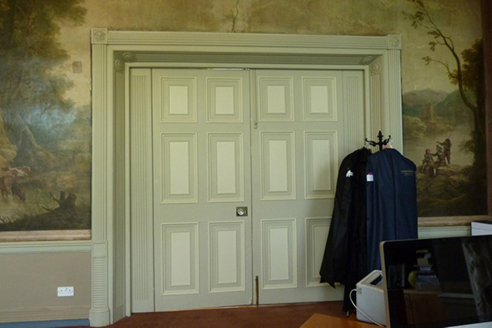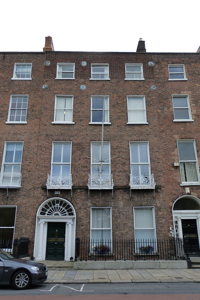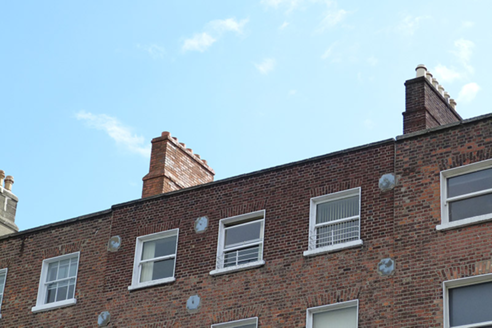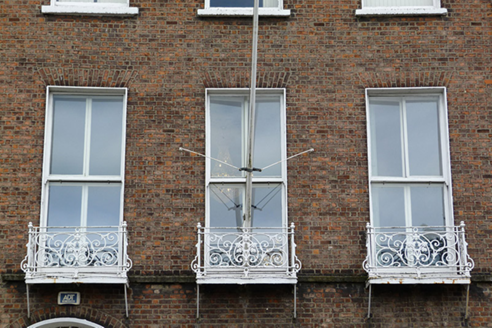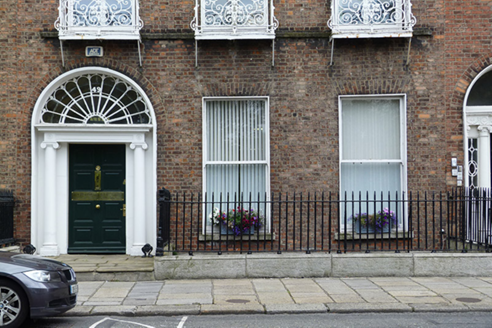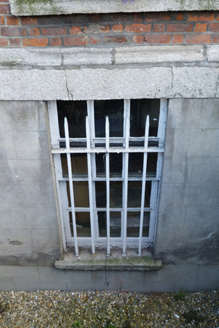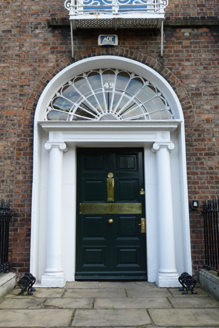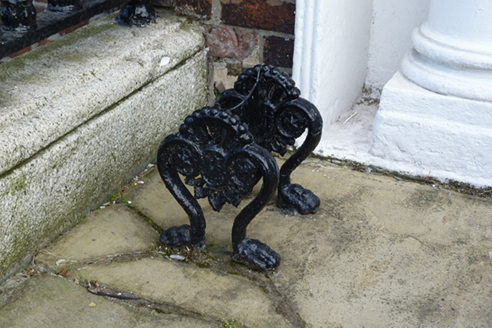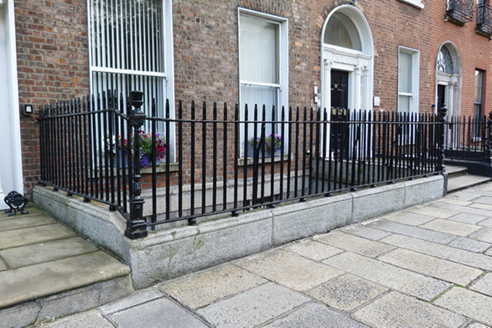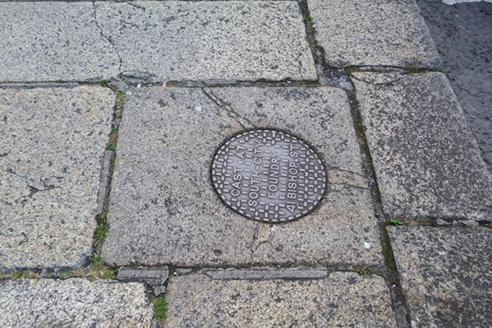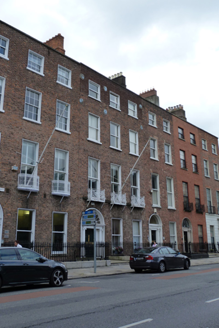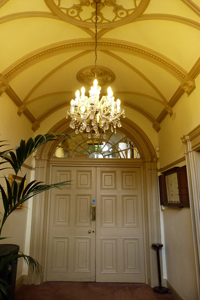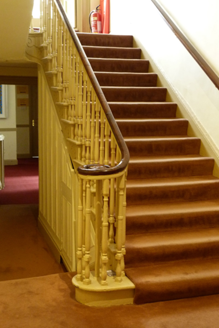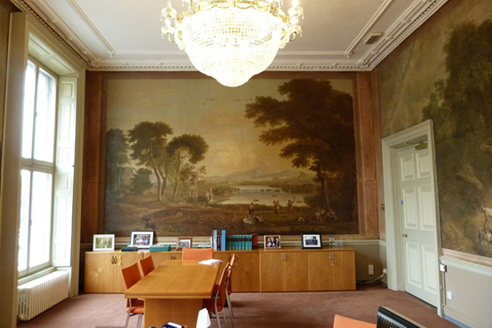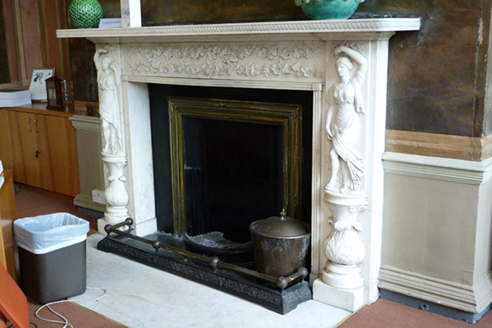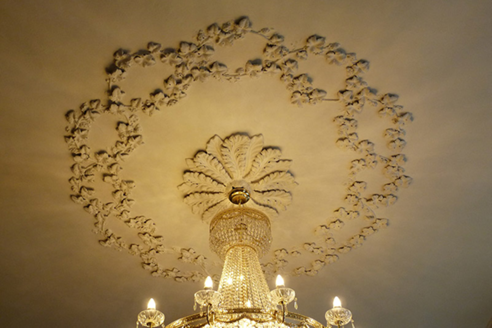Survey Data
Reg No
50100514
Rating
National
Categories of Special Interest
Architectural, Artistic
Original Use
House
In Use As
Office
Date
1780 - 1800
Coordinates
316802, 233423
Date Recorded
09/08/2016
Date Updated
--/--/--
Description
Attached three-bay four-storey former house over basement, built c. 1790, with two-storey additions to rear, middle part being canted to south, part next to house having glazed roof and rest having hipped slate roof. Now in use as offices. Pitched slate roof to front, behind brick parapet with granite coping, and having two hipped roofs to rear perpendicular to street, south being larger and north being single-pitched; shouldered chimneystacks with clay pots. Flemish bond brown brick walls on moulded granite plinth course over rendered basement walls, rebuilt in red brick above top floor window sill level and having pattress plates to top floor; rendered walling to rear. Square-headed window openings, diminishing in height to upper floors, with rendered reveals and painted granite sills. Timber sliding sash windows, hornless six-over-six pane to basement and replacement one-over-one pane elsewhere. Rear elevation has apparently timber sliding sash windows, tripartite to south and with round-headed stairs window to north. Ornate cast-iron balconettes to first floor, wrought-iron window-guards to top floor and wrought-iron grilles to basement. Elliptical-headed doorcase with moulded render surround, panelled and rosetted frieze, moulded cornice, Ionic columns, peacock's tail fanlight and eight-panel timber door with brass furniture. Sandstone platform with decorative cast-iron boot-scrapes and one granite step. Basement area enclosed by wrought-iron railings with decorative cast-iron posts on moulded granite plinth. Entrance hall has vaulted plasterwork ceiling with central rose, square and round-headed door openings with reeded architraves and timber panelled doors; stairs hall has timber open-string staircase with turned timber balusters and mahogany handrail; first floor rooms have painted murals above chair rail, chimneybreasts with Victorian marble chimneypieces to east wall, heavy plasterwork cornices and plasterwork ceiling roses, and square-headed door openings with reeded architraves and timber panelled doors. Three-bay two-storey Gothick mews building at rear, having hipped slate roof with crenellated parapet having moulded stringcourse to base, rendered walls with stepped buttresses flanking middle bay, pointed-arch openings to ground floor comprising Y-traceried windows flanking chamfered doorway with glazed timber door, and with square-headed leaded windows to first floor.
Appraisal
No. 49 Merrion Square forms part of the original development of the eighteenth-century square, part of the Fitzwilliam Estate. It displays elegant proportions and good fenestration. Its ornate Ionic doorcase provides a strong decorative focus, supplemented by the decorative ironwork to the balconettes. With its intact setting details, it also contributes to the intact appearance of this important Georgian square, and the wider historic fabric of the south city. Of particular significance is the retention of an elegant early nineteenth-century scheme of mural paintings, commissioned by Robert Harty and inspired by various Italianate landscape painters. These murals are unique in the context of Dublin's Georgian interior decorative schemes. The building has housed the offices of the National University of Ireland since 1912. The survival of a Gothick mews building is rare and adds significantly to its importance The square is one of the best-preserved Georgian streetscapes in Ireland. Its north, east and south sides are lined with terraced houses of late eighteenth and early nineteenth-century date, while the west side is terminated by the garden front of Leinster House. The houses of the east side are the most uniform on the Square, maintaining similar building heights and fenestration patterns. Individuality was introduced through the use of elaborate doorcases, window ironwork and interior decorative schemes. The east side was originally set out in five large plots and the houses built here were generally narrower than those on the north side and erected in a piecemeal fashion.
